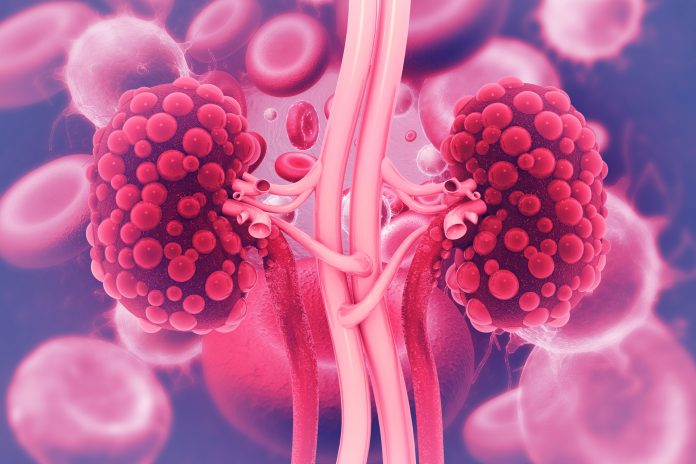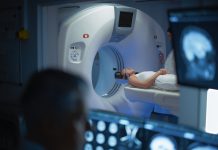Polycystic kidney disease is a genetic disorder that lacks a cure and can significantly impact an individual’s quality of life. We spoke to the American Kidney Fund regarding the challenges of diagnosis and disease management
Earlier this year, a nationwide research team funded by the National Institutes of Health (NIH) made a significant breakthrough in understanding and treating kidney diseases. They created the Kidney Tissue Atlas, a comprehensive atlas of the human kidney, which allows for the comparison of healthy kidney cells to those affected by disease.
The kidney’s complexity has made it challenging for scientists to develop accurate kidney models, which limits the ability to understand the factors contributing to kidney disease progression, kidney failure, and recovery from injury and hinders the development of new treatments. The Kidney Tissue Atlas, part of the Kidney Precision Medicine Project (KPMP), supported by NIH’s National Institute of Diabetes and Digestive and Kidney Diseases (NIDDK), will help researchers overcome these limitations.
We spoke to the American Kidney Fund about the key challenges regarding diagnosing, treating, and managing polycystic kidney disease (PKD), one of the most common inherited conditions affecting the kidneys. Of the estimated 37 million Americans currently living with kidney disease, about 2% are living with PKD. As part of its mission to fight kidney disease on all fronts, the American Kidney Fund (AKF) is committed to promoting awareness and understanding of kidney diseases like PKD.
What is PKD, and how common is it?
PKD is the most common form of genetic kidney disease. The result of a genetic mutation, this disease causes cysts to grow in the kidneys, sometimes in the thousands, making the kidneys larger than normal— with some kidneys weighing up to 30 pounds—and damaging the organ in the process. There are two forms of PKD: autosomal dominant polycystic kidney disease (ADPKD) and autosomal recessive polycystic kidney disease (ARPKD).
The former is more prevalent, with about nine out of ten cases of PKD being ADPKD. According to the PKD Foundation, ARPKD primarily affects infants and children, with approximately one in 25,000 children living with ARPKD. In severe cases, babies with ARPKD can die within days after birth. However, 80% of babies with ARPKD who survive the first month will live to ten years or older.
How can PKD impact a person’s quality of life?
PKD primarily impacts the kidneys and can cause kidney pain, kidney stones, and kidney failure (or end-stage renal disease). About half of the people with PKD will have kidney failure by the time they are 60 years old, which requires dialysis or a kidney transplant for the patient to survive. PKD can also cause secondary health problems, including high blood pressure, urinary tract infections, colon problems, cysts on the pancreas or liver, heart problems, brain aneurysms, or (for pregnant women) preeclampsia.
In addition to the physical impact on the body, living with PKD can take a serious toll on a person’s mental health; depression and anxiety are common among people living with PKD. If someone with PKD reaches kidney failure, they may experience further emotional and mental challenges as they navigate the cost and time requirements of dialysis treatments, the potential impact on their ability to work, the necessary diet changes, and the fear of pain. Fortunately, support groups are available for people living with PKD, and social workers can connect patients to resources to help them cope with their disease.
What are some challenges regarding diagnosis?
Unfortunately, patients often will not experience any symptoms of the disease until it has progressed to the later stages. While ARPKD can be diagnosed before birth and symptoms appear early in childhood, people with ADPKD may not experience any symptoms until they are between 30 and 50 years old, despite being born with the disease. Since there is no cure for kidney disease and no way to reverse the damage, screening for the disease is the best way to catch it early, managing it to slow progression before the kidneys fail.
Kidney disease is diagnosed through blood and urine tests that measure kidney function. However, PKD can be more challenging to diagnose because of the “prognostic gap.” This refers to the gap between the kidney damage the blood test detects versus the actual damage the cysts create. The cysts can make it appear that there is more functional kidney tissue than there actually is, leading to a higher reading on the blood test and making it look like the patient’s kidney disease is not as bad as it is.
For this reason, it is important that patients with PKD also have the volume of their kidneys regularly measured through ultrasounds, CT scans, or MRI scans.
What treatments are available, and how can patients manage the disease?
While there is no cure for either form of PKD, there are lifestyle changes a patient with ADPKD can make to manage the disease and slow its progression. These include working with their doctor to prevent or manage diabetes and high blood pressure, keeping a healthy weight, taking medicines as prescribed, following a kidney-friendly eating plan, exercising, and more.
Patients may also be eligible to receive an FDA-approved medicine for ADPKD. The first-ever treatment specifically for ADPKD is a pill taken twice a day that slows the growth of cysts and has been shown to preserve kidney function. It is a long-term use drug—extending the time before a person needs dialysis or a transplant, though it does not cure ADPKD.
For ARPKD, it is harder to prevent or slow the disease as it can start causing problems from birth. However, patients can do genetic tests for PKD while pregnant, particularly if they or someone in their family has PKD, and prenatal ultrasounds can detect if the baby’s kidneys are larger than normal, possibly indicating ARPKD. After birth, ARPKD treatments include dialysis, kidney and/or liver transplant, growth hormones, medicines to lower blood pressure, and antibiotics to prevent infections.
There is a pipeline of treatments in development for PKD, but they must undergo testing before they can be approved for use. Clinical trials are essential for the development of new treatments, but they need willing participants, which can be a struggle as there are many misconceptions about clinical trials. AKF’s educational campaign about clinical trials provides information about the process to help dispel these misconceptions, explaining the importance of diversity in clinical trials and encouraging more people to participate.
American Kidney Fund
www.kidneyfund.org
Twitter
Linkedin
Facebook
Youtube
Instagram








